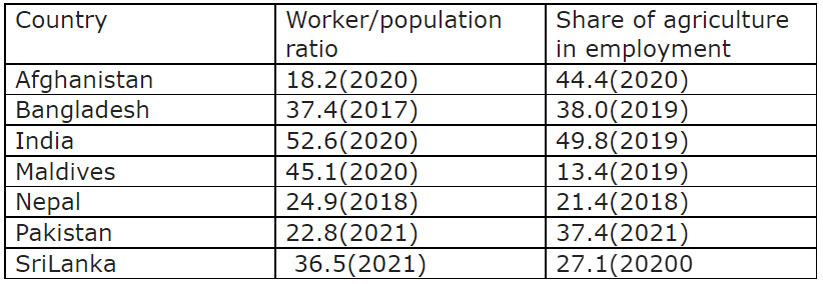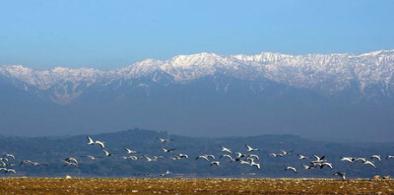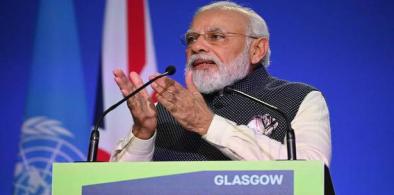Sectoral economic transition in South Asia: Emerging trends and opportunities
Between 2008 and 2021, the sectoral economic transition witnessed in most countries in South Asia - and in other parts of Asia - has reduced the sectoral share of GDP in agriculture and also the employment burden on agriculture in most countries. This trend, however, changed in the wake of Covid -19 when the share of agriculture in GDP in countries rose along with share of employment.

Sectoral economic transition is one of the important objectives of development programmes in all countries, and as their economy progresses, the sectoral transition from agriculture to industry and services takes place. But in recent years, particularly after the onset of Covid -19, the sectoral transition processes have got disrupted in many developing countries with thousands of workers returning to rural areas due to lockdowns forcing people to seek surety of livelihoods in the agriculture sector.
The relative impact of Covid19 in terms of sectoral output has been more severe in the industrial and services sectors as compared to agriculture in the South Asian region. Agricultural output during Covid-19 in the region has been less affected as compared to either industries or services. In other parts of Asia, namely East Asia, the impact of Covid 19 has not been severe on agriculture, except in South Korea and Taiwan. In Southeast Asia the impact of Covid 19 on agriculture has been severe In many major economies of the region - namely Thailand, Singapore, the Philippines, and Malaysia. In the Caucasus and Central Asia and the Pacific regions, the impact of Covid-19 on agriculture has not been as widespread as in Southeast Asia.
The data on sectoral shares of GDP between 2008 and 2021- for 29 countries of Asia - including eight countries of South Asia based on ADB data ( the period coinciding with the global financial crisis beginning with the Wall street meltdown and continuing with the onset of the Covid -19 pandemic in 2020 -21 ) - shows that there has been a rise in the share of agriculture in GDP for Bhutan, India, Maldives and Pakistan. The Services sector during this period has grown for Afghanistan, Bhutan, India, Nepal, Pakistan, and Sri Lanka.The share of the industrial sector in GDP has, however, declined for most countries of the region, except for Bangladesh Sri Lanka, and Maldives. The trends on growth of services and industries in other parts of Asia show that in East Asia services sector has grown in Hong Kong, the Peoples' Republic of China and the Republic of Korea, while the industrial sector has grown only in Mongolia and Taiwan.In Southeast Asia, the services sector has grown in Brunei, Indonesia, Lao, Malaysia, the Phillipines, Singapore,and Thailand while industrial sector has grown in Cambodia,Lao, Timor Leste and Vietnam.
In Caucasus and Central Asia services sector grew in Kazakstan while industries grew in Tajikistan and Uzbekistan. In the Pacific region services sector has not grown in any of the three countries considered while the industrial sector grew in only Fiji. The widespread growth of the services sector as we will see is largely reflective of the pace of globalization that has taken place in these economies.
Table one: Share of economic sectors in Global GDP

https://www.statista.com/statistics/256563/share-of-economic-sectors-in-the-global-gross-domestic-product / (Figures in brackets show per cent variation)
Data statistic shows the share of economic sectors in the global gross domestic product (GDP) from 2011 to 2020. The global sectoral growth in services and agriculture between 2019 and 2020 are in keeping with the trends observed during theCovid-19 pandemic.
Rising share of agriculture
Most countries in South Asia, and other parts of Asia, experienced the global trend of rising sectoral share of the agriculture sector during Covid -19, but the growth of services and industries has been less widespread both in South Asia, and in other parts of Asia, except in Southeast Asia.
Globalisation has certain other important economic trends. While manufacturing is considered to be any economy’s engine of growth, in the entire process of globalisation, particularly in developing countries, such a process is brought about mainly through the productivity advantage in resources, mostly in terms of cheaper labour which such countries enjoy over others. Experience has shown that as countries industrialise, their productivity advantage tends to weaken and countries gradually shift towards service-driven sectors, which also tend to grow to aid industrialisation either in the host country or with overseas connection by way of financial,marketing and administrative support services bringing in theirm wake a whole range of sectors which broadly could be termed as the services sector. It is for this reason that the share of manufacturing in GDP is lower, on average, in high-income economies than it is in upper middle-income countries.
Besides, the high-income countries’ lower share of manufacturing in GDP and higher share of services has also been partly influenced by offshoring activities on their part and relocation of manufacturing production to lower wage economies. As a result of offshoring and relocation, the majority of global manufacturing employment is concentrated in developing and emerging industrial economies. These countries have been estimated to employ about 365 million people, accounting for around 80 per cent of global manufacturing jobs in 2019. Seven out of the top ten manufacturing industry employers last year were China, India, Bangladesh Indonesia, Pakistan Vietnam, and Japan - all Asian countries of which three are in South Asia. The remaining top three employers were United States, Brazil, and the Russian Federation. Despite the growth in manufacturing jobs in developing and emerging industrial economies (excluding China), the share of manufacturing employment declined moderately from 14.5 per cent in 2009 to 13.8 per cent in 2019..( SDGSTATISTICAL INDICATORS OF INCLUSIVE AND SUSTAINABLE INDUSTRIALIZATION -Biennial Progress Report 2021https://www.unido.org/sites/default/files/files/2021-09/SDG_report_2021_final.pdf,PP18-24 )
Agriculture, however, continues to be an important source of employment and livelihood for people of most South Asian countries. The share of agriculture in total employment and the share of agriculture to GDP ratio of these countries show that for most countries while the share of agriculture has been declining in GDP or increasing marginally, its share in employment continues to remain important. While the share of agriculture in GDP for India declined from 17% in 2010 to 16.8% in 2019, its share in employment increased from 46.8% to 49.8%; for Bangladesh while the share of agriculture in GDP declined from 17% in 2010 to 12% in 2019, the share of employment which was 47.5% in 2010continued to remain high at 38% in 2019; for Pakistan during this period the share of agriculture declined from 24.3% in 2010 to 22% in 2019, while employment continued to remain high at 39% in 2019.
For some of the other major Asian countries that create manufacturing jobs, agriculture continued to remain important. For Indonesia, in 2019, while agriculture constituted 13% of GDP, it employed 28% of the population,while for Vietnam in 2019, where agriculture constituted 15% of GDP, more than 34% of the population was engaged in this sector. For China, although the share of agriculture in GDP declined from 9.3% in 2010 to 7% in 2019, the share of agriculture in total employment was 24% in 2019. Japan, among the Asian top employers of manufacturing employment, is a developed country where agriculture had a share of just 1% of GDP in 2019 engaged only 3% of its workforce in agriculture that year.
The dependence on agriculture for employment in South Asia is significant when we see some other labour market indicators.
Table South Asia: Labour market indicators

Source: ADB key indicators for Asia and Pacific 2022 (estimated)
Globalisation which resulted in the rise in the sectoral share of services between 2008 and 2021 in most countries that we have studied in Asia, also has witnessed a rise in the sectoral share of agriculture .particularly in the aftermath of Covid-19 in 2020.
Economic transition to industries
Certain countries of the South Asian region also witnessed a rise in the sectoral share of industries during this period. Three countries in South Asia - Bangladesh, Maldives and Sri Lanka - particularly witnessed a rise in the sectoral share of industries. Countries in the other parts of Asia which witnessed a rise in the sectoral share of industries are Mongolia,Cambodia,Lao, Timor-Leste, Vietnam,Taiwan, Tajikistan,Uzbekistan and Fiji.
Between 2008 and 2021 along with a rise in the share of industries in GDP some of these countries also witnessed increases in other sectoral shares. For instance in South Asia, Maldives (2008-2020) has experienced an increase in the share of agriculture while Sri Lanka saw an increased sectoral share in services. In Southeast Asia, Lao witnessed an increase in share in services.In Caucasus and Central Asia Tajikstan witnessed an increase in share of agriculture; so did Uzbekistan.In the Pacific region Fiji (2008-2020)witnessed an increase in share in agriculture.
.
The sectoral economic transition in South Asia and other parts of Asia also saw a reduced share of agriculture in total employment for most countries.This phenomenon is reflective of employment and livelihood opportunities being created, either as agro-based support services or outside the agriculture sector in the area of services and industry.
Between 2008 and 2021, the sectoral economic transition witnessed in most countries in South Asia - and in other parts of Asia - has reduced the sectoral share of GDP in agriculture and also the employment burden on agriculture in most countries. This trend, however, changed in the wake of Covid -19 when the share of agriculture in GDP in countries rose along with share of employment. The agriculture sector became the option that was available for many of those who lost employment opportunities during the Covid-19 pandemic.
(The writer, a retired Indian Economic Service officer, is an expert on labour and employment. Views are personal, He can be reached at ppmitra56@gmail.com)

















Post a Comment